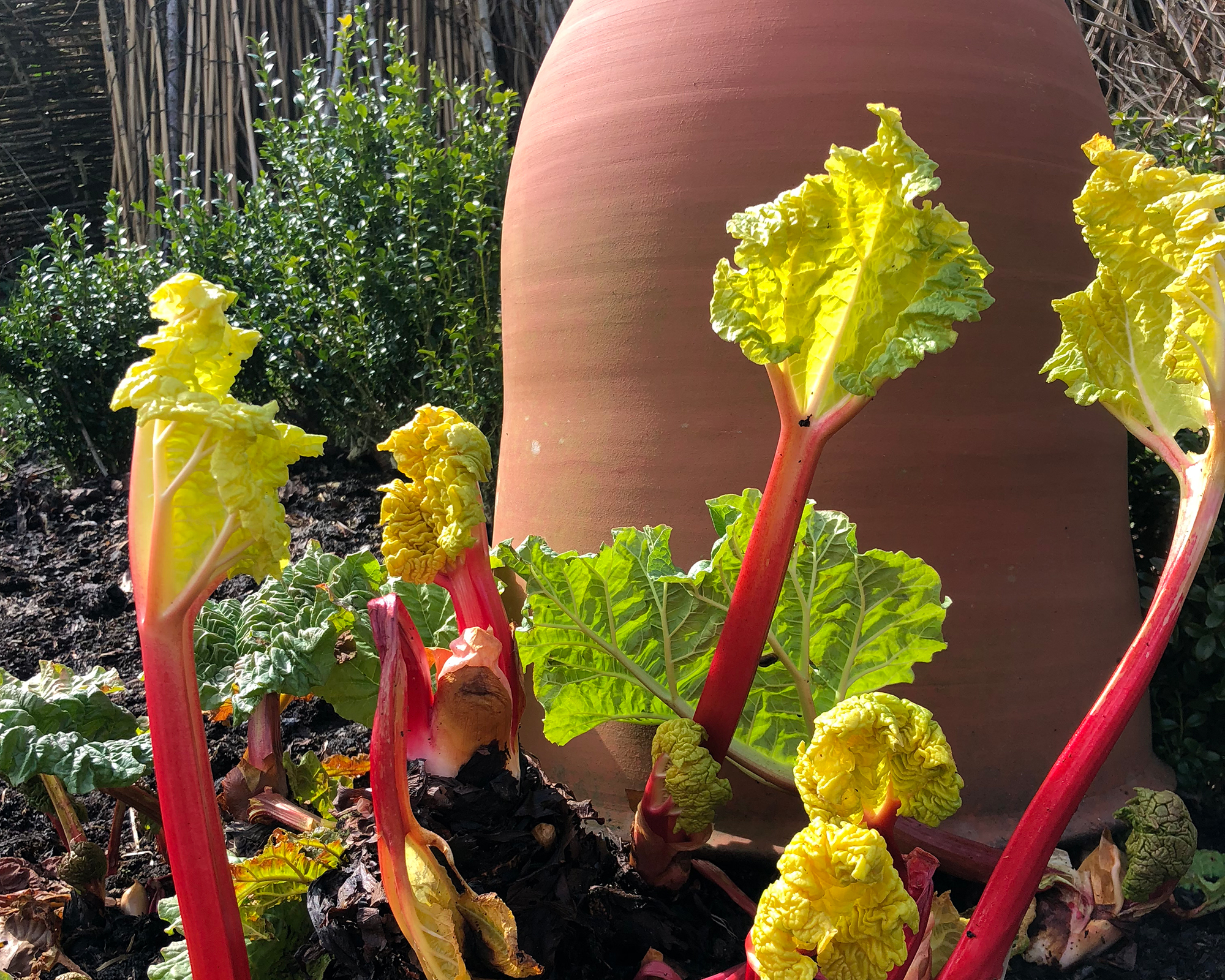How to harvest rhubarb – and enjoy this easy-to-grow seasonal treat
Discover how to harvest rhubarb for a plentiful homegrown crop


Find out how to harvest rhubarb and you will be rewarded with a glorious crop and strong plant that will continue providing delicious stems year after year.
Botanically a vegetable, but treated as a fruit, rhubarb needs very little care and maintenance and if treated well, a single plant or ‘crown’ can produce a healthy and plentiful crop for up to 10 years or more.
Grow rhubarb yourself, and you will find it far more flavorsome than any store-bought stalks, this seasonal treat can be made into delicious pies, desserts, jams and is useful for juicing too. What’s more any surplus, is easy to prepare and simple to freeze.
‘Rhubarb can be grown in the ground or in pots,’ says homesteader Kaylee at Rooted Revival. ‘But be warned, this plant needs space as it can get quite large! Leave at least 3-4 feet to allow your rhubarb to reach its full size potential.’
Learn how to harvest rhubarb so you can look after your plants and maintain a reliable crop to enjoy for years to come.
How to harvest rhubarb
Whether you are growing forced rhubarb or not, the technique is the same for harvesting it. Discovering how best to harvest rhubarb is not only hugely satisfying but will save your plant from the risk of suffering long-term damage too.
Using the correct technique is simple, quick and actively encourages the crown to send up fresh and strong, flavor-packed stems.
Follow this simple guide – laden with expert tips – to ensure years of successful cropping.
1. Grasp stalks near the base
Mastering the art of harvesting rhubarb is surprising easy. There are no specialist tools required either which makes it even more curiously pleasing when you get it right.
The team at Berkeley Horticultural Nursery says to, ‘Grasp stalks near the base and pull sideways and outward as cutting with a knife will leave stubs that decay.’
Horticultural expert Sue Sanderson at Thompson & Morgan also suggests, ‘To harvest, pull each rhubarb stalk from the base of the stem and twist it away from the crown.'
2. Harvest frugally
The team at Berkeley also says to, ‘Never remove all the leaves from a single plant. Stop harvesting when leafstalks begin to appear slender and remove any blossom stalks.’
Sue Sanderson agrees: 'It's important to only harvest a few stems at a time (never more than half of the available stems), as over-cropping will reduce the plant’s vigor. The rhubarb plant will need time to build up energy reserves for next year’s crop, so make sure to finish harvesting by the end of July.’
How do you pick rhubarb so it keeps growing?
Picking stems of rhubarb is pretty straightforward. Use the right technique and you will have a good, strong and tasty stalk that will fill many a tasty tart or pie.
Choose a stem that is around 10 inches (25cm) in length or more and slide your hand down to the base, where it emerges from the plant. Pull gently to one side, twist and tug firmly in an upwards direction.
The stem should come away cleanly from the main crown and should be noticeably paler at the very tip. This indicates that the whole stalk has been removed and will encourage the plant to heal, without becoming susceptible to disease.
Be sure to cut off and discard the leaves, as they are extremely toxic.
You can also consider transplanting rhubarb for stronger plants and a bumper crop the following year
Does rhubarb keep growing when you pick it?
A rhubarb plant or crown that is two years old or more will keep producing edible stems throughout the growing season – from early spring to late summer. But if you want to prolong the plant’s productivity for years to come you will not just need to know when to harvest rhubarb but when to cease picking – around June/July to allow it time to store up its energy for the following year.
Why is my rhubarb producing slender stems?
‘If the stalks start to get weak and spindly on an established plant this is usually a sign that it needs lifting and dividing,’ says plant expert and cook Sarah Raven. ‘The central section has probably become old and woody and should be discarded, whilst the younger rhizomes around the edge can be replanted in a new spot with well composted organic matter.’
Sign up to the Homes & Gardens newsletter
Design expertise in your inbox – from inspiring decorating ideas and beautiful celebrity homes to practical gardening advice and shopping round-ups.

Journalist Jill Morgan has spent over 20 years writing and editing gardening, interior and property features. Titles she has worked on include The English Home, House Beautiful, Ideal Home, Houzz and Modern Gardens and she writes regularly for H&G as a Contributing Editor. Whilst she is a dab hand at renovation projects and DIY, she is happiest when out digging in the garden or planning a new border.
-
 I’m an HVAC technician, and this is when I turn my AC on each year – plus 5 checks I always do beforehand
I’m an HVAC technician, and this is when I turn my AC on each year – plus 5 checks I always do beforehandSave yourself an AC hassle by running my checks and turning it on before big heat hits
By Josh Mitchell Published
-
 This simple marble hack elevates my budget-friendly wooden kitchen countertops and prevents the dreaded water damage for way less than you’d think
This simple marble hack elevates my budget-friendly wooden kitchen countertops and prevents the dreaded water damage for way less than you’d thinkThis design trick looks expensive, solves a problem, and was the easiest decision I made during my kitchen reno
By Charlotte Olby Published